The treasure trove hidden in discarded computers
- Published
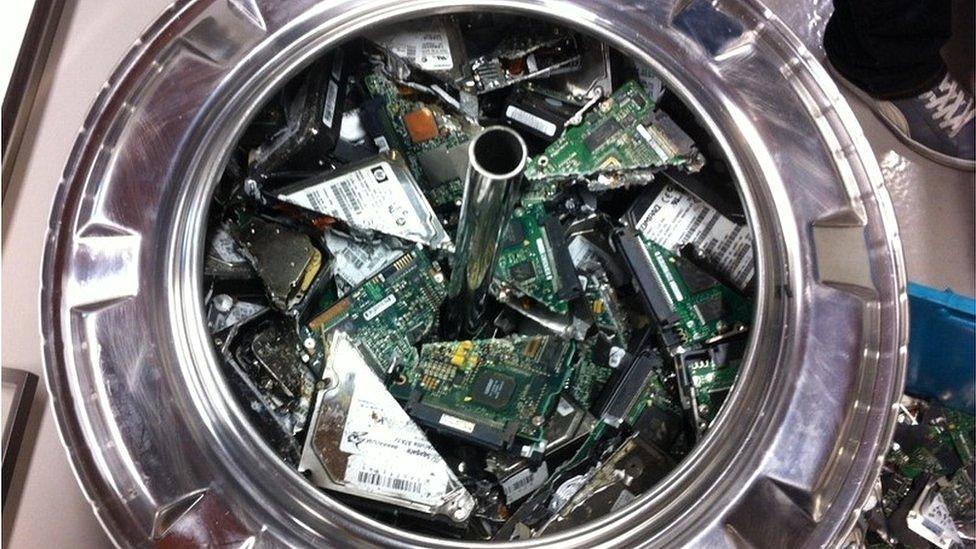
Valuable rare metals can be harvested from discarded disk drives
What do you do with an old hard disk drive, the kind that still spins up inside most PCs, once it reaches the end of its life?
If Allan Walton has his way, parts of it could soon be propelling your next car along the road, assuming you go electric.
The University of Birmingham professor is a director in the firm Hypromag, which extracts and recycles neodymium magnets from used hard disks.
Neodymium is a rare earth metal - chemical elements considered essential ingredients in many of today’s must-have technologies, from smartphones to TV screens. Neodymium is used, among other things, to make magnets that turn the motors that drive electric vehicles.
Prof Walton believes that in the next 10 years, his company could be recycling enough neodymium to meet a quarter of the UK’s demand - almost all of which is currently imported from China.
Once electric vehicles are assembled and running, they are broadly seen as being more environmentally friendly than cars with an internal combustion engine. But making magnets from rare earths is far from green.
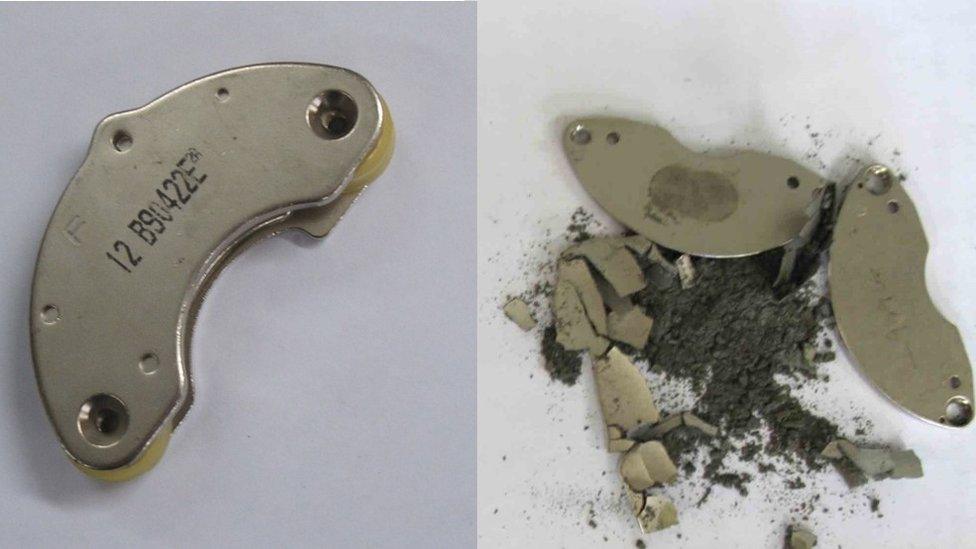
The disk drive part is bathed in hydrogen, revealing the valuable neodymium
Though processes needed to refine rare earths use many of the same chemicals found in oven cleaners and cosmetics, their waste can be destructive if not properly controlled.
At one mining site, Bayan Obo in Inner Mongolia, they have contributed to a vast toxic lake.
Next to the mine itself is a tailing dam, a reservoir created by what is left over from separating rare earths.
Steel and aluminium already have large established recycling programmes which help to reduce chemical processing.
However, rare earth minerals used in phones, hard drives and old wind turbines are generally lost.
Four years ago at the University of Birmingham, Prof Walton and his mentor, Prof Rex Harris, discovered that running hydrogen gas through old hard-disk drives turns the magnets into powder which can be harvested, re-packed and coated, to become new magnets.
Not only will the project offer a greener solution to the rare earths market, the global demand for these minerals means there is a business case to be built.
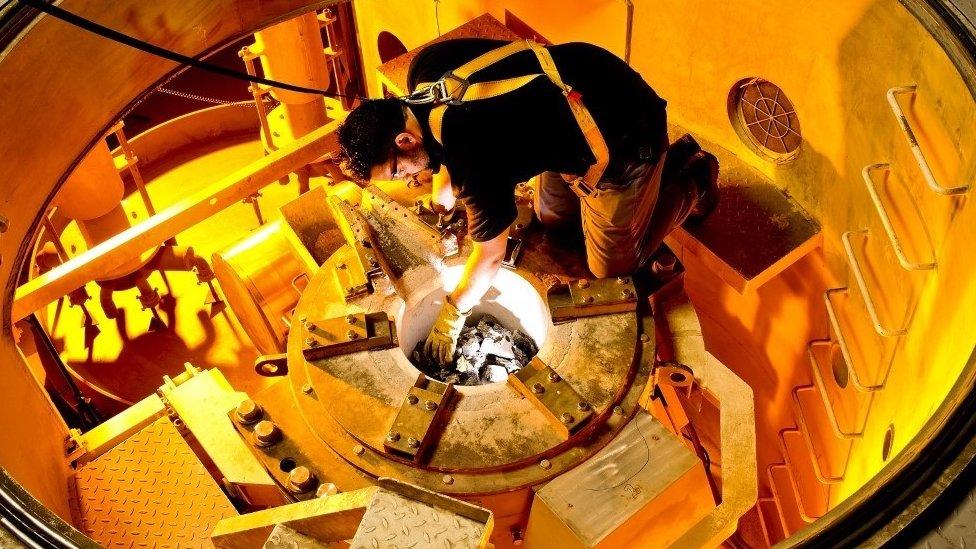
The reclaimed neodymium can be melted down to make new magnets
“We are missing a trick. There is no trouble finding rare earths, it’s the processing them into a useful material, like a magnet,” says Prof Walton.
This year, Hypromag expects to announce a deal with the UK car company Bentley.
It has received a £2.6m grant from Innovate UK and a half a million pounds of investment and further partnership from an African junior mine, Mkango.
However, the Hypromag solution will only meet a fraction of the growing demand for rare earths, which analysts estimate will double by 2025.
Prof Walton believes that if Britain acts now and creates a scaled-up rare earths recycling industry, it could become a world leader.
The opportunity is huge, with many emerging technologies such as 5G demanding rare earths, on top of the growing need for established technologies such as phone handsets, microprocessors and wind turbines.
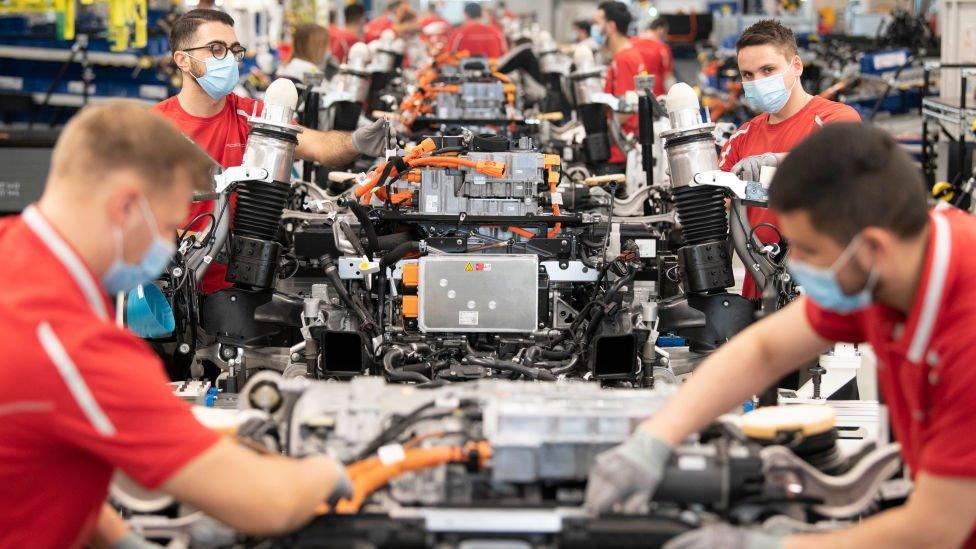
More electric cars will mean more demand for rare earth metals
However, the main reason rare earths have been compared to oil, is government policies that will fuel the demand for electric vehicles.
After 2025, the Netherlands will not sell petrol or diesel cars. The UK and France have pledged to meet this goal by 2040. This year, China aims for 12% of cars sold in the country to produce zero emissions.
When it comes to the production of rare earths and magnets made from them, China is the world leader.
The country corners the market because its companies can mine rare earths and process them locally into finished products. More than 70% of rare earth products are exported by China.


The country corners the market because it is the only place in the world with companies that can make rare earth minerals into finished products. More than 70% of rare earth products are exported by China.
And, its established supply chain offers them unmatchable discounts.
Rare earths are part of the Made in China 2025 plan to become the world’s leading manufacturer.
But while China exports processed products, the country’s natural resources are not rich in heavier types of rare earth that are most in demand, like the neodymium used for car magnets.
China gets most of its neodymium from Burma and the United States, says Christopher Ecclestone, a mining strategist at Hallgarten.
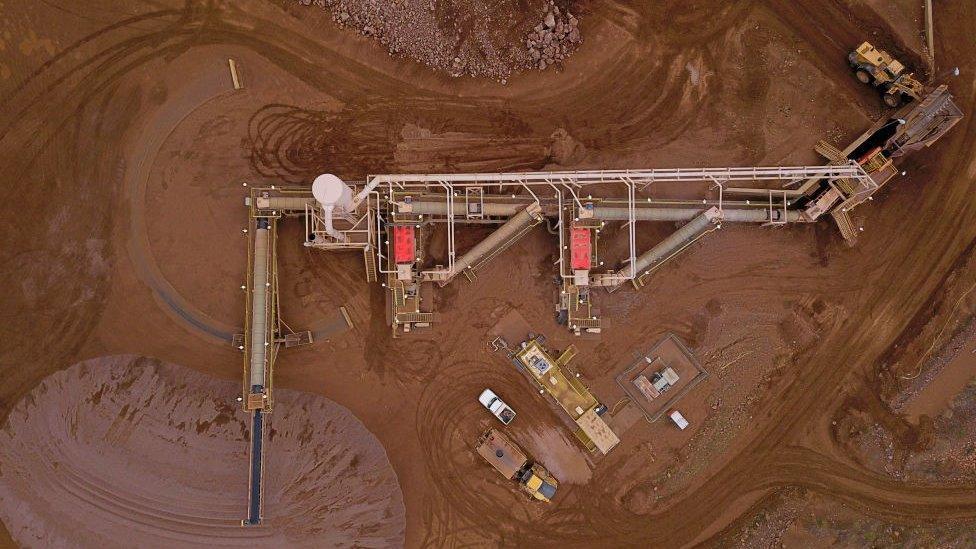
The Mountain Pass mine in California is part-owned by China's Shenghe Resources
The Mountain Pass mine in California sells 100% of its rare earths in a concentrated form to China - and is part-owned by Chinese firm Shenghe Resources, which has a 9.9% stake.
“The US is one of China’s largest sources of rare earths and the Chinese are taking it for a song. It drives the Pentagon crazy,” he says.
What put China in control of the market was that rare earths were a by-product of already established mines, says Ian Higgins, the director of Less Common Metals in Ellesmere Port near Liverpool.

Other rare earth metals and their uses
Neodymium - permanent magnets used in cars and wind turbines
Erbium - fibre cables for high-speed broadband and lasers
Dysprosium - commercial lighting and also nuclear reactors
Cerium - glass polish, catalytic converters and oven cleaner
Yttrium and Terbium - weaponry including laser targeting and cruise missiles

Mr Higgins's firm is one of the only manufacturers outside of China to make and combine rare earth metals into alloys.
He points out that Chinese mines are supported by government subsidies and opaque accounting practices.
While environmental policy in China has improved, the largest mines were built before their implementation.
“There is a lot of processing of rare earths which is horrific and there is also a lot of black and grey market smuggling of heavier rare earths.” says Mr Higgins.
However, he adds that the country is beginning to wake up to the environmental impact of its rare earths industry.
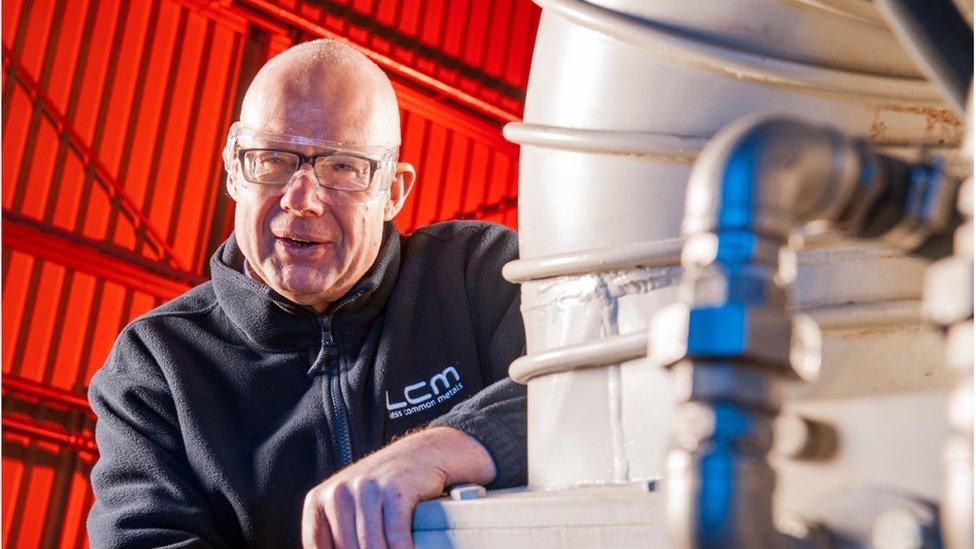
Ian Higgins is one of the few manufacturers of rare earth alloys outside China
The Covid-19 pandemic has caused global assembly lines to grind to a halt. But it has also spurred manufacturers who use rare earths to question the global supply chain and their reliance on a single source country.
The crisis has pushed governments and businesses to "localise resources,", according to Andrew Bloodworth a director at the British Geological Survey.
“People like me tell our government that any production that is concentrated in small places will be vulnerable to disruption,” says Mr Bloodworth.
America, the UK and Europe are trying to build supply chains for rare earths outside of China.
On 13 May, legislation was put before US legislators, aimed at giving tax breaks to the industry - $50m in funding was also earmarked for start-up mines in the US.
In the EU, the Horizon 2020 fund has launched an initiative to build a supply chain across several European and Nordic countries, including Britain.
In the UK, rare earths are integral to the government’s industrial strategy, according to Jeff Townsend, who this year set up a lobbying firm to represent the industry’s interests.
“Government needs to understand and do more than set out a grand vision of an industrial strategy. It needs to get its hands dirty and provide the supply chain,” he says.
“Covid has knocked everyone sideways and lots of people are looking again at the way we do things,” says Mr Townsend.
He adds: “If we make the decision that we want to be better, then we have to try to be better because that’s the only way we change society.”